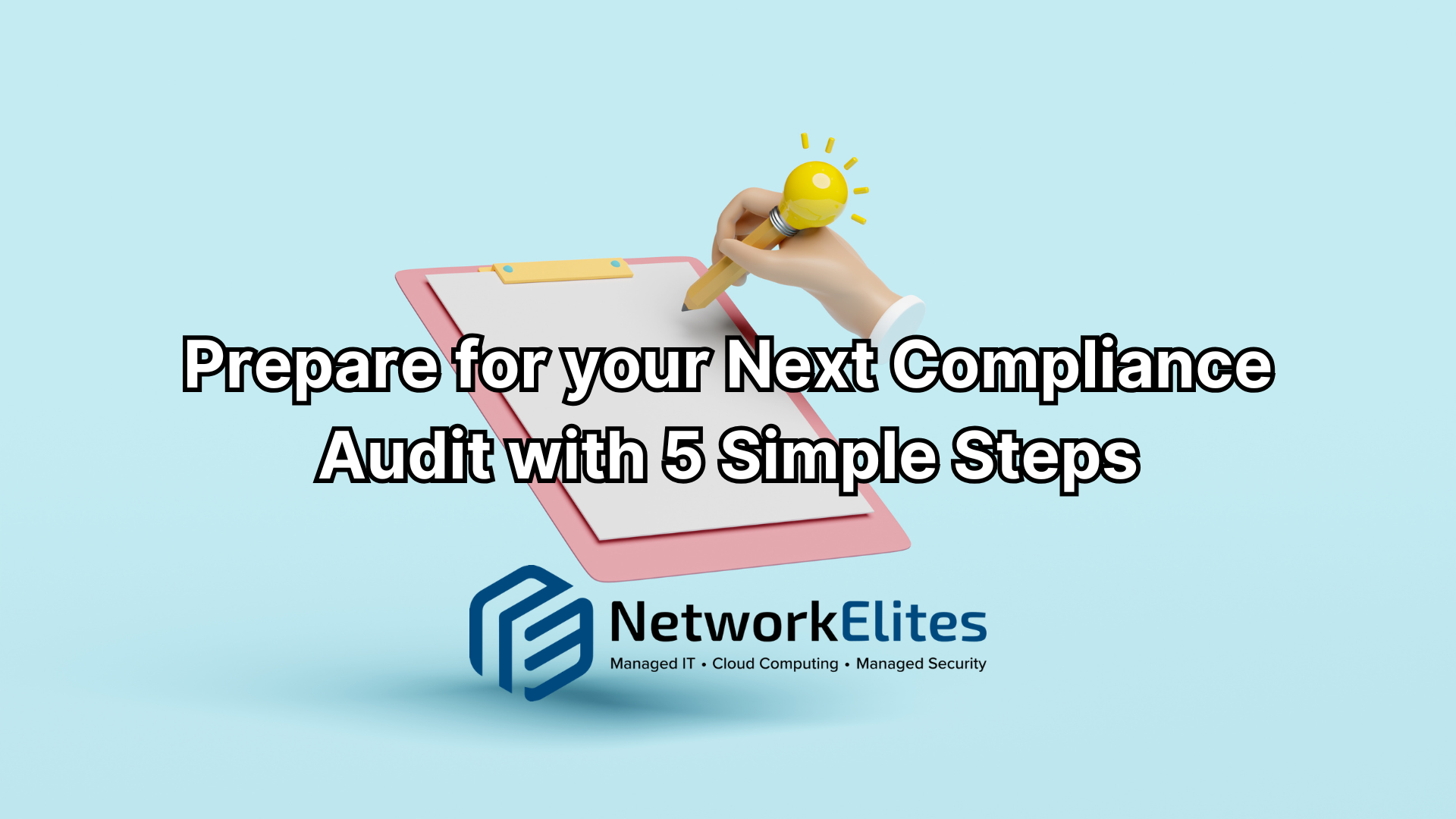Are You Audit Ready? 5 Simple Steps to Prepare for Your Next Compliance Review
Introduction
Compliance audits are crucial for ensuring that your business adheres to regulatory requirements and industry standards. But for many, "audit" can sound like a daunting word. The truth is, being unprepared can lead to costly penalties, reputational damage, and even disruptions to your operations.
The good news? Preparing for an audit doesn’t have to be overwhelming. With the right steps, you can transform the process from stressful to seamless, ensuring your organization is always audit-ready. This blog will guide you through five simple steps to help you ace your next compliance review. Whether you're facing your first audit or seeking to improve your internal processes, these tips provide a solid foundation for success.
Step 1 Understand the Scope of Your Audit
Before you can begin preparations, it’s vital to understand what type of audit your business is facing and its specific requirements. Knowing the scope will serve as a roadmap for your preparations.
Identify the Type of Audit
Audits vary depending on the regulations and standards relevant to your organization. Common examples include:
- Financial Audits to ensure accuracy in reporting.
- IT and Security Audits to evaluate data privacy and cybersecurity controls.
- Regulatory Compliance Audits like HIPAA, GDPR, or PCI DSS to meet legal standards.
- Operational Audits to assess efficiency and risk management.
Each requires a different approach, so clarify the purpose of your audit and the governing bodies or standards involved.
Review Applicable Regulations and Standards
Obtain a clear understanding of the rules that will be evaluated. Familiarize yourself with documentation such as frameworks, laws, or relevant industry guidelines. For example:
- If you’re preparing for a HIPAA audit, review the HIPAA Security Rule and Privacy Rule.
- For PCI DSS compliance, focus on encryption, cardholder data security, and related measures.
Define Key Areas of Focus
Outline which departments, processes, and documentation will fall under the audit's scope. For instance:
- Financial audits may target payroll records and expense reports.
- An IT audit may review access controls and incident response policies.
Understanding these specifics streamlines your efforts and ensures you avoid focusing on irrelevant areas.
Step 2 Conduct a Self-Assessment
Think of a self-assessment as a practice round before the actual audit. Conducting an honest evaluation of your current compliance status will reveal strengths and, more importantly, gaps in your processes.
Perform a Gap Analysis
Use the audit’s guidelines as a checklist and compare your organization's current processes and documentation against them. Identify:
- Areas where you've fallen short in meeting compliance standards.
- Any documentation, training, or controls that are incomplete or outdated.
For example, if your business handles sensitive client data, a gap analysis might reveal inadequate encryption methods or a lack of employee cybersecurity training.
Prioritize Actionable Items
Not all gaps identified in your self-assessment are created equal. Use a risk-based approach to prioritize issues that could have the most significant impact during the audit. For instance:
- High Priority for gaps like missing regulatory documentation or unencrypted sensitive data.
- Lower Priority for non-critical procedural updates.
By addressing your weak spots now, you're removing potential red flags before they surface in the actual audit.
Step 3 Gather and Organize Documentation
Proper documentation is at the heart of any audit. It serves as evidence of your compliance and is often the first thing auditors will request.
Compile Essential Documents
Depending on the type of audit, essential documents may include:
- Policies and procedures manuals.
- Financial statements.
- Employee compliance training records.
- Incident response reports.
- Access logs and system configuration details.
Ensure these records are accurate, up-to-date, and readily accessible.
Use a Centralized Repository
Organizing documentation can make or break the efficiency of your audit preparation. Use a centralized repository such as a cloud-based compliance platform. This ensures:
- Easy access for authorized personnel.
- Efficient cataloging according to audit requirements.
- Reduced likelihood of misplacing critical files.
Maintain Version Control
Auditors may request evidence spanning various time periods. Implement version control for documents to ensure you can retrieve historical records in addition to current ones.
Step 4 Train Your Team
Compliance is a team effort. Every member of your organization, from the C-suite to entry-level employees, plays a role in maintaining audit readiness.
Educate Employees on Audit Processes
Schedule training sessions to ensure your staff understands:
- The purpose and scope of the audit.
- Their roles in providing documentation or complying with requests.
- How to confidently answer auditor questions, if required.
Reinforce Compliance Practices
Leverage the audit as a moment to reinforce compliance culture across your organization. Regularly review:
- Security practices like password hygiene.
- Data handling procedures.
- Emergency response protocols.
A well-informed team minimizes compliance risks and alleviates last-minute confusion during the audit itself.
Step 5 Mock Audit and Refine
Think of a mock audit as a dress rehearsal. It’s your chance to simulate the real thing, identify potential weak spots, and fine-tune your strategies.
Engage Internal or External Auditors
Consider hiring a third-party auditor or appointing an internal compliance specialist to mimic the audit process. This helps you:
- Experience the intensity of the audit environment.
- Gather feedback from outsiders who may spot gaps your team overlooked.
Refine and Repeat
Once the mock audit is complete, compile the feedback, refine your processes, and conduct another round if necessary. The preparation phase underscores the importance of agility and adaptability. This iterative approach ensures your organization is better equipped for any curveballs during the actual audit.
Why Audit Readiness Matters
Preparation isn’t just about passing an audit. It’s about safeguarding your organization’s reputation, building trust with stakeholders, and ensuring operational resilience. By implementing these five strategies, you’ll not only ease the stress of audits but also set your business up for long-term success.
However, navigating the nuances of compliance audits can be challenging, especially for first-timers or those managing complex regulations. That’s where Network Elites can help. Our experienced team specializes in helping businesses like yours achieve compliance with ease, from self-assessments to full-scale audit support. Contact us today for tailored guidance and support.
Meta data
Meta title
Prepare for your Next Compliance Audit with 5 Simple Steps
Meta description
Learn how to get audit-ready in five steps. Simplify preparation, reduce risks, and ensure compliance with expert tips. Contact Network Elites for guidance.
Frequently Asked Questions (FAQ)
- What is a compliance audit?
A compliance audit is a comprehensive review performed to ensure that an organization adheres to regulatory guidelines, industry standards, and internal policies. These audits help identify gaps and ensure accountability in maintaining compliance.
- How can I prepare for a compliance audit?
Preparation starts with conducting a self-assessment to identify areas of non-compliance. Organize all necessary documentation, ensure your team is trained on relevant policies, and consider working with compliance experts like Network Elites to streamline the process.
- What are the common challenges during a compliance audit?
Common challenges include incomplete documentation, lack of proper training for employees, and misaligned processes with regulatory requirements. Addressing these issues in advance is key to achieving a successful audit outcome.
- How often should compliance audits be conducted?
The frequency of compliance audits depends on regulatory requirements and your industry standards. However, conducting them annually or semi-annually is a best practice to ensure continuous adherence to compliance guidelines.
- How can Network Elites assist in compliance audits?
Network Elites offers end-to-end support for compliance audits, including self-assessments, risk evaluations, documentation reviews, and audit preparation. Our dedicated team works closely with businesses to simplify compliance and ensure successful audit outcomes. Contact us today for more information!








